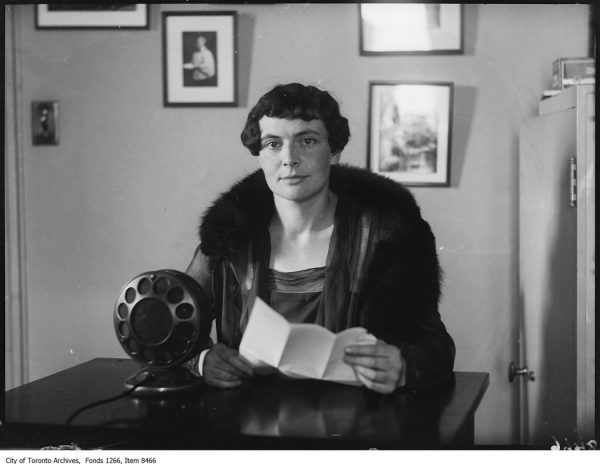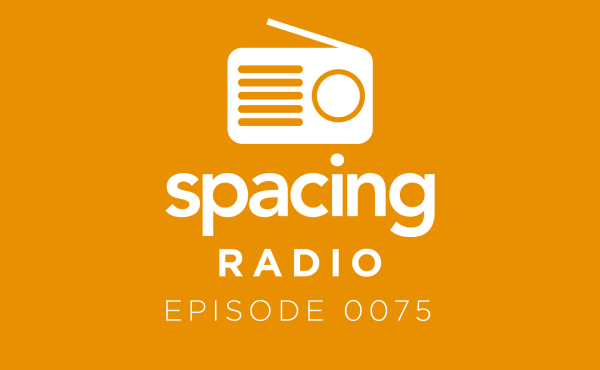This is the first of a four-part series on urban oral history.
Do you want to learn about a city by talking to people who have been walking its streets for decades? Would you like to organize a local oral history project?
Old maps, data sets, and archival documents are essential research finds for those looking to understand the history of a place. But a living elder who witnessed that history — who waded through it as it was happening — will turn a map into a story and give the data points meaning.
In the fall of 2020, as the pandemic raged, Dr. Aditi Mehta and I co-taught a class on oral histories at the University of Toronto. The students in this class interviewed older adults in Toronto and Columbus, Ohio, and they did research to find out more about the places these elders came from, and the lives they lived. At a time when people worldwide were not leaving their homes and rooms for fear of contracting the coronavirus, the class provided for joyful human connections and new friendships.
But asking questions about an elder’s life and community transcends pandemics. The process we developed is virus-safe, but will also be relevant after the world is vaccinated. And it’s not hard to replicate — no university class required.
This is a step-by-step guide to conducting a local oral history interview. As a journalist and editor, I came to the teaching team with one key specialty: how to interview. Or, more precisely, how to have a good conversation with someone whose knowledge is embedded in all the details of their daily life in their community.
THE PROCESS
So be advised, there are a few important steps to take before the first interview.
First, do some research and pick a project: maybe the history of one city block; the story of what happened to the tenants of a building demolished 20 years ago; or the experiences of a particular immigrant community when its members first arrived in Canada. The possibilities are endless.
Second, find older adults who are able to talk about the topic at hand. A neighborhood community center or house of worship may yield willing participants. (Mehta and I wrote proposal letters to True Davidson Acres, a Toronto long-term care home, and The Greater Columbus Network of Villages, a community program for older adults living in their homes.)
Finally, plan a way to present the interviews when they’re done. Our class hosted an event on Zoom for participating elders and students. Other options include publishing an essay in a newspaper or magazine, making a website to showcase the history, or filing interview transcripts with a local public library or archive.
Now for the best part: interviewing.
1. Write out questions in advance
Nothing substitutes for a thoughtful, pre-written list of questions, in the basic order the interviewer plans to ask them. Yes, the interviewer might come up with fantastic questions on the fly, or the interviewee might tell a movie-worthy tale out of the blue. But preparation increases the chances of these outcomes.
Here are a few types of questions that land better with advance planning.
History questions: To be able to ask someone about, say, downtown nightlife in the 1950s, the interviewer needs to research nightlife in that era. Check old newspaper clips to find the names of the hottest clubs. Look up liquor laws and closing times for bars. Find old photos to see what people were wearing. Will the internet yield a video of young people dancing in the 1950s? Have you tried to learn the dance steps in your own kitchen?
Personal questions: A lot of people do want to talk about the sad things that happened to them in their lives, but it can be hard to ask those questions. Writing out different versions of the same question helps the interviewer get the wording right. Be prepared for any answer, including “I don’t want to discuss that.” There’s no need to push someone to talk about something personal, but keep the door open for anyone who cares to recount their greatest losses and sorrows.
Basic questions: Never forget to ask people how they spell their name, where they were born, their pronouns, and whatever other standard questions are on your list.
It’s okay to bend to the needs of your interviewee. Some people need to chat about the weather for 15 minutes just to settle in. Others want to get right down to business. Others give one-sentence answers. This is where the question list comes in handy: build on it, scrap it, or return to it as needed.
2. Choose communication technology that works for the person you’re calling
Telephone, Skype, FaceTime, Google Hangouts — they all work well. And when the world is ready, in-person meetings will be even sweeter than they were before the pandemic. The important point is to choose a communication mode that works for the interviewee. Maybe an interviewee likes the phone because they can walk and talk at the same time. When the interviewee is more comfortable, the interview will be better.
Plan a recording strategy for every communication mode, and practice each strategy in advance. Follow it all the way through, from getting on a test-run call with a friend to recording to transferring that recording to a computer or an online storage platform. And always ask permission to record.
3. Be prepared and stick to a schedule
If interviews with one person will be ongoing, plan a schedule and stick to it. Send out a confirmation before each meeting, and be on time. Most people react well to dependability.
Listen to the recording of the previous week’s call and write out follow-up questions, or note threads of the conversation that were dropped. It sometimes helps to settle on a topic in advance so that the interviewee has time to think about it, or even dig up some old photos or papers that speak to the chosen topic.
For the last interview, budget some time to reflect on the process, ask all leftover questions, and thank the interviewee for their generosity.
4. Collect gems, even if they don’t fit into your research
In the height of the pandemic, the resident at True Davidson Acres I was interviewing missed her friends and the dining room. But she told me this delightful story about the house where she used to live, and it’s stayed with me ever since:
I had one lady friend who lives across the street, and she used to come for a cup of tea, and we’d talk for about an hour or so. In the summer we’d get out, and we loved that because I used to do some weeding in the garden, right with her talking to me, and it was very nice. I have some lovely roses in the front of my garden, in the circle there, and they smell so beautiful. It’s like the nicest perfume I’ve ever smelled. And they’re white roses, and they seem to just re-bloom and re-bloom. Of course, it’s been three years since I’ve done any gardening there, you know. I’ve just planted a few things, and they grow, and I have some perennials that grow every year.
Oh, it’s nice to have flowers in your garden. I think if I never have a garden, as long as I have a window box, and just load it up with flowers — I love flowers.
photo courtesy of Toronto Archives: founds 1266, item 8466
Alexa Mills is a journalist and teacher based in New York. She serves as a writing coach and editor for early-career journalists at the New York Times. Follow her on Twitter at @alexatimeaus.




